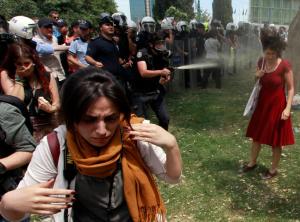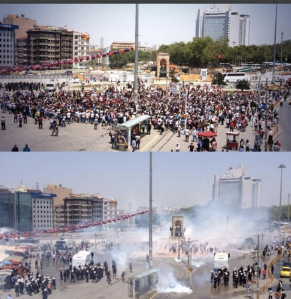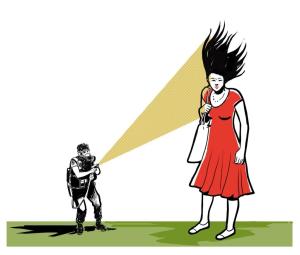Park Life: Occupy Istanbul?
It was summed up in a tweet: this could be the Turkish Spring. The person was referring to a CNNturk broadcast, which finally had picked up the story of the past days of occupation of the Gezi park in Istanbul and the following police violence. A peaceful protest turned into widely circulating images of tear gas, facial injuries, and a range of police measures that anyone seeing the pictures could not see as proportionate, despite some government officials trying to dismiss the events. Some tweeters escorted their images of tear gas filled Taksim with a reminder: “this is not Middle East, this is Istanbul”.
The occupations had to do with a tactical colonialisation of both hashtag space and real lived urban space. The fit to purpose and inevitable hashtags had already paved the way on Twitter: #Occupygezi and #Occupytaksim signalled the connection to the widely known occupation of the Zuccotti Park in New York that spread as model for global reappropriations: occupation of public streets as a form of reclaiming the commons. Such occupations were never really only about that particular space, but also more abstract but as real features: protests against the logic of financial capitalism and their relation to the securitization of public space.
The events at the Gezi Park might have started with protection of trees planned to be bulldozed to make space for yet another city mall, but they revealed much about the recent urban planning of Istanbul as well as global capitalism.
Istanbul had seen rather worrying street action the past months already: For instance the movement against the demolishing of the historical Emek film theatre was met by water cannons and tear gas. In less violent news, which however have to do with public space as well, the new legislation restricts retail sales of alcohol during the night and bans selling of alcohol near mosques.
Besides urban space, natural space has been another target. The plan to build a third bridge over Bosphorus has been fiercely criticized by a range of environmental and other groups for its clear madness: in addition to the massive cutting down of trees, such building projects including the new airport set to open in 2018 are a threat to the water resources of the area.
Of course slogans and hashtags matter in how they condense and collect a range of different images, narratives, participant accounts and political sentiments. Social media acted as a way to quick and dirty collating of material, not least images like on the tumblr site: http://occupygezipics.tumblr.com/. Hence the reference to “Arab Spring” was something of a rather successful slogan. After all, Turkey was supposed to be the democratic moderate Muslim country acting as a role for the uprising Arab countries.
However, the past years have seen more of international attention to the range of human rights violations against journalists and activists. The events at Gezi Park are in this sense a rather logical continuation of control of public space that in Istanbul is paradoxically mixed with a political ignorance of specialist urban planners voicing their concerns. On the one hand, lots of the massive sizes building projects are short-sighted in terms of their implications for the environment and the long term future of the city. This includes lack of planning for instance for public transport, which in a city completely congested by millions of cars is not a minor feature. On the other hand, the police measures that restrict the public space and political protest are showing how the major financial investments and projects are tightly linked with authoritarian security.
Indeed, besides being able to tap into the past years of legacy of Occupy-movements as well as Arab Spring, the case for OccupyIstanbul is emblematic of bigger contexts. Like seemingly every contemporary struggle, the urban battle of Gezi park and the real-world struggle with capitalist development and authoritarian policing exists at in real spaces and commons and in digital hashtag spaces with established news agencies covering the former by following the latter.
But it also should be read again as part of a longer development: the exploitation of ecological resources and the public urban commons, and the connection between short-sighted economically driven planning with totalitarian security is something we should understand is not restricted to Istanbul.
People might be now wondering how can a city that is applying for the Olympics 2020 demonstrate such reckless behaviour. Unfortunately, this is actually not that contradictory. It also shows the capacity to control the public space, protect the commercial environments and brands and take necessary measures in construction projects to pave the way for global cultural events. In London, the Olympic year of 2012 London was also the year of Occupy movement camping front of St. Paul’s Cathedral. London 2012 might not have been a violent affair but it demonstrated a link between police-governed high tech security and global brands.
Images from Reuters and via Twitter. Thanks for feedback to Paul Caplan and for the constant stream of information to Emre Kizilkaya and dozens of others via Twitter.
About the author:
Dr. Jussi Parikka is a cultural and media theorist. He works as Reader in Media & Design at Winchester School of Art, UK. He writes on contemporary culture and media technologies and his books include Digital Contagions (2007), Insect Media (2010) and What is Media Archaeology? (2012). Parikka blogs at http://jussiparikka.net
This article was originally published at http://jussiparikka.net/2013/05/31/park-life-occupy-istanbul/


